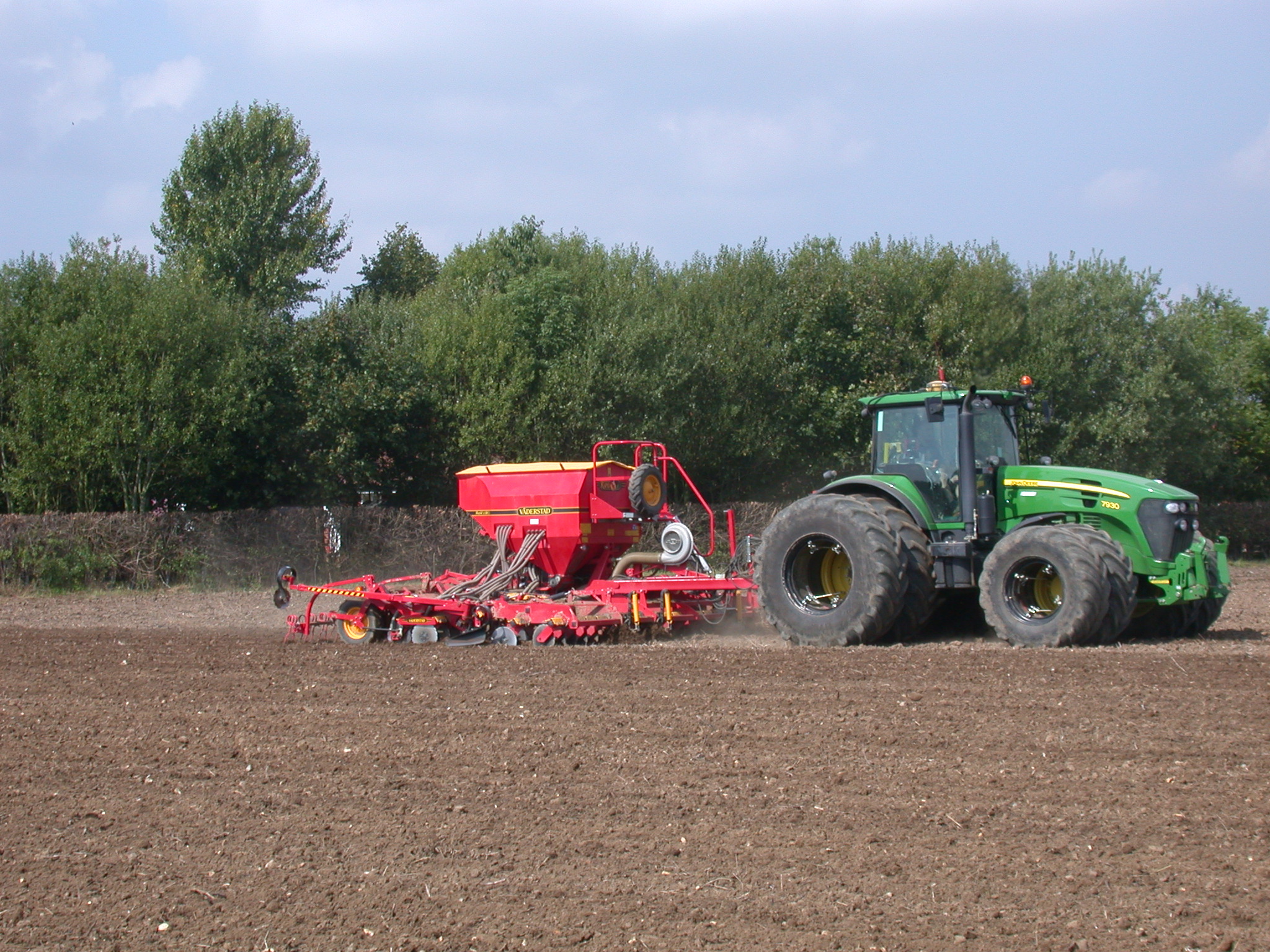Beef
Cattle prices remain strong but fell back throughout March and are just below 2023 levels. However, prices appear to be stabilising now. The GB deadweight prime all steer price for the week ending 13th April 2024 stood at 487.5p per kg; compared with 490.8 p per kg for the same week in 2024. The cull cow price has climbed steadily since the turn of the year, from 316.9p per kg at the start of 2024 to 356p per kg for the week ending 13th April. Even so, it is still some 27p per kg below last year’s record levels. GB slaughterings are estimated to be up on the year, with prime supplies seeing a 2.7% (13,100 head) growth on the year-to-date. But prices are being supported by demand, which is reported to be good ahead of the summer BBQ season. Furthermore, Irish cattle prices have been trending up over recent weeks due to firm demand adding further support to GB beef values.
Sheep
The GB sheep market has experienced some exceptional prices over the spring. Following a slight dip a couple of weeks ago, prices have increased again; the GB deadweight SQQ overall price for the week ending 13th April rose by 21p per kg on the week to 850.7p per kg, compared with 636.3p per kg in 2023. Prices have remained strong post-Easter supported by tight supplies. The AHDB estimates slaughterings to be down by 7.6% (238,000 head) for the year-to-date. The wet weather is also impacting finishing of hoggs and will mean spring lambs are likely to take longer to come to market.
Looking ahead, the AHDB has updated its domestic sheep meat production for the year. It is now estimating supplies to fall by -1.4% to 282,000 tonnes (previously -1%). The update follows the lastest livestock numbers from Defra, which reports a larger decline in the breeding flock. In turn, the lamb crop, which was previously forecast to increase by 2%, is now expected to decline by -1.2% compared with last season and this doesn’t take into account any impacts from Schmallenberg or Bluetongue virus.
However, the carryover of old season lambs from 2023 to 2024, although still down on the year, is not expected to drop by as much; the fall in carry-over is now estimated at -4.3%, compared with the previous figure of -10%. This is due to the assumption that more ewe lambs, previously expected to go into the breeding flock, will be slaughtered. In terms of new season lamb slaughterings in the first six months of the year, this is now expected to be around 1.57m head (previously 1.6m). Slaughter in the second half of the year assumes a typical pattern and is forecast to be 6.4m head (previously 6.6m); growth of just under 1% compared with the same period in 2023. Adult sheep slaughterings across the year are forecast to fall by -3%. The revised forecast show supplies tightening and whereas, previously, the increase in product in the second half of the year could have put downward pressure on prices, this has reduced. The main concern for the sector will be from reduced consumer demand because of a switch to cheaper meats.
If you would like more detail on the topics covered above as well as additional articles on UK farm business matters, why not subscribe to our Professional Update bulletin? Over the course of each month, we give a concise and unbiased commentary on the key issues affecting business performance in the UK agri-food industry, and its implications for farming and food businesses. Please click on the link below for a 90-day free trial.
Sign up to the Professional Update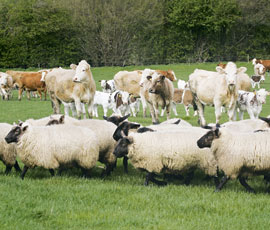
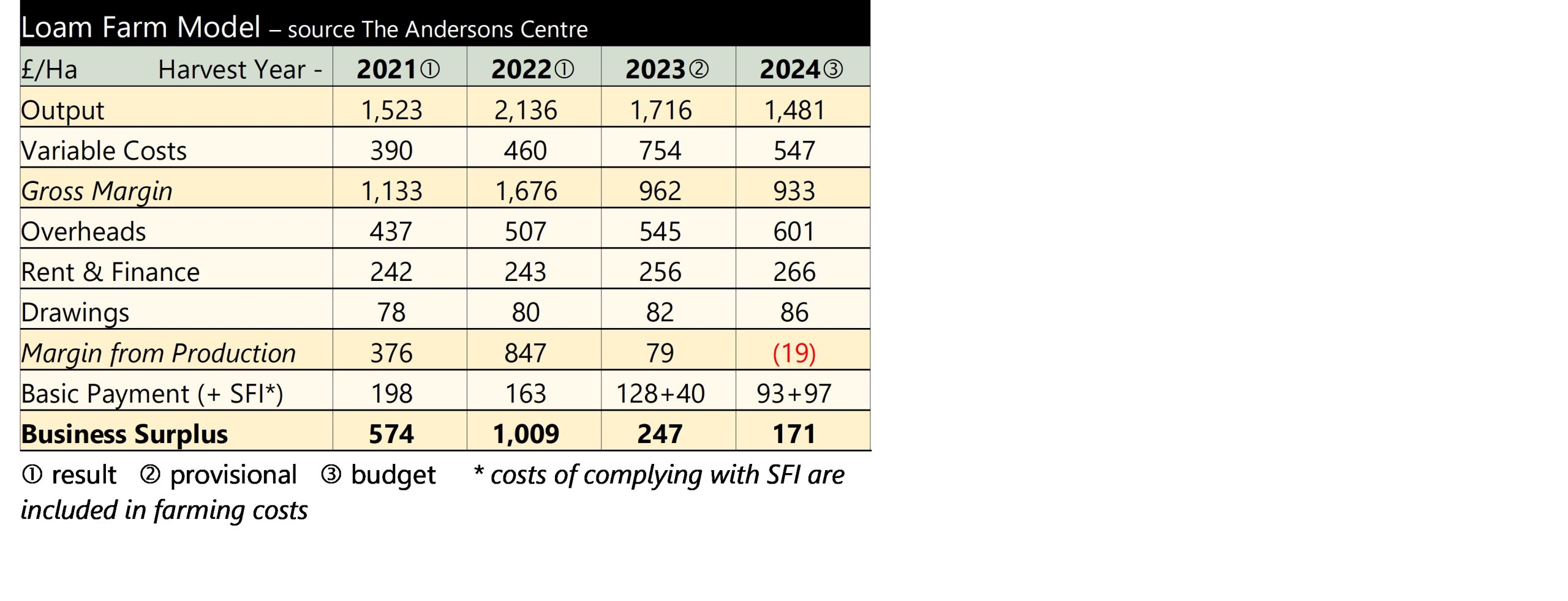 The farm has just finished its sales from harvest 2023. It can be seen that the returns have been far lower than the previous 2021 and 2022 harvests. However, those two were unusually good (some of the best profits Loam Farm has seen in 30+ years). The results for harvest 2023 are far more in line with historical averages. However, even with the farm making a profit, the business is under some cashflow pressure due to higher working capital requirements and the need to pay tax on the profits from the two previous good years.
The farm has just finished its sales from harvest 2023. It can be seen that the returns have been far lower than the previous 2021 and 2022 harvests. However, those two were unusually good (some of the best profits Loam Farm has seen in 30+ years). The results for harvest 2023 are far more in line with historical averages. However, even with the farm making a profit, the business is under some cashflow pressure due to higher working capital requirements and the need to pay tax on the profits from the two previous good years.